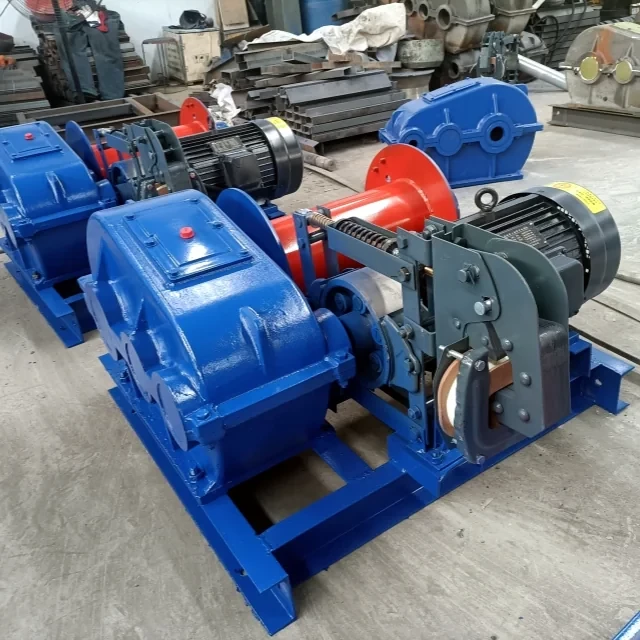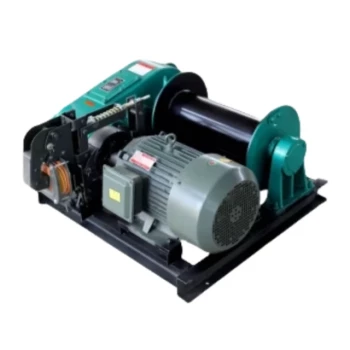Every hoist winch operator knows the heart-stopping moment when machinery behaves unpredictably. Proper debugging isn't just about fixing immediate issues—it's about preventing catastrophic failures before they occur. This guide systematically walks through electrical validation, mechanical safety setups, and post-debugging verification to ensure your equipment operates at peak reliability.
Electrical System Validation: The Foundation of Stable Operation
Three-Phase Current Balance Fundamentals
Imbalanced currents in hoist winches cause overheating, reduced efficiency, and motor burnout. Here’s how to diagnose and correct imbalances:
- Measurement Tools – Use a clamp meter to check current flow in all three phases simultaneously.
- Acceptable Variance – Industry standards permit ≤10% deviation between phases. Exceeding this requires rewinding or power supply adjustments.
- Root Causes – Loose connections, uneven winding resistance, or voltage supply issues often trigger imbalances.
Ever wondered why some motors fail prematurely? Current imbalance silently degrades insulation over time.
No-Load Test Measurement Protocols
Before loading, verify baseline electrical performance:
- Voltage Stability – Fluctuations >5% indicate transformer or grid problems.
- Current Draw – Compare no-load amps (NLA) to manufacturer specs. Elevated NLA suggests mechanical friction or misalignment.
- Phase Sequence – Incorrect sequencing reverses motor direction, risking cable or load damage. Use a phase rotation tester for confirmation.
Mechanical Safety Configuration: Precision Saves Lives
Limit Switch Alignment Techniques
Limit switches prevent over-travel disasters. Align them with surgical precision:
- Positioning – Install switches where the hook block has 100–200mm buffer space before reaching endpoints.
- Trigger Testing – Manually trip switches during slow-speed operation to verify instant cutoff.
- Redundancy – Dual-switch systems (primary + backup) are mandatory for overhead lifts.
Visual metaphor: Think of limit switches as elevator emergency brakes—they’re useless if calibrated too late.
Stroke Adjustment Tolerance Standards
Winch drums must wind cables evenly without overlaps or gaps:
- Layer Spacing – Maintain 1.5x cable diameter between wraps. Crowded layers accelerate wear.
- Flange Clearance – Leave 2–3 cable widths between outermost wrap and drum flange.
- Real-Time Monitoring – Use load cells to detect abnormal tension spikes during adjustment.
Post-Debugging Verification: Ensuring Long-Term Reliability
Load Testing Procedures
Simulate real-world conditions progressively:
- 25% Capacity – Check brake holding torque and structural integrity.
- 110% Overload – Mandatory for certification; observe for abnormal noises or slippage.
- Dynamic Tests – Repeated start-stop cycles reveal hidden electrical or control flaws.
Long-Term Maintenance Indicators
Post-debugging, track these wear signals:
- Electrical – Monthly insulation resistance tests (minimum 1MΩ).
- Mechanical – Quarterly wire rope inspections for broken strands or corrosion.
- Operational – Logging runtime hours helps schedule proactive part replacements.
Conclusion: Debugging as a Risk Mitigation Strategy
Hoist winches demand a marriage of electrical vigilance and mechanical precision. By methodically validating current balance, aligning safety mechanisms, and stress-testing under load, you transform debugging from reactive troubleshooting into proactive risk management.
Actionable Next Steps:
- For Garlway winches, always cross-reference debugging parameters with the brand’s operational manuals.
- Implement a bi-annual re-verification schedule—even stable systems degrade over time.
- Train teams to recognize early warning signs like unusual motor hum or erratic limit switch behavior.
Final thought: In heavy lifting, the margin between safety and disaster is measured in millimeters and milliamps. How will your next debugging session close that gap?
Related Products
- Electric and Hydraulic Winch for Heavy Duty Applications
- Best 18000 Pound Drum Anchor Trailer Winch
- Portable Small Trailer Winch
- Hydraulic Winding Engine Harbor Freight Winch
- Small Electric Winch 120V and 240V for Compact Applications
Related Articles
- How Winch Technology Solves 5 Critical Heavy-Load Challenges
- How Electric Winches’ Engineering Enhances Efficiency and Safety in Heavy-Duty Applications
- Hydraulic Winches: When Heavy-Duty Power Justifies the Investment
- How to Choose and Optimize a Winch for Any Job: Power, Capacity, and Environment
- How to Choose and Safely Operate Winches for Construction Efficiency


















